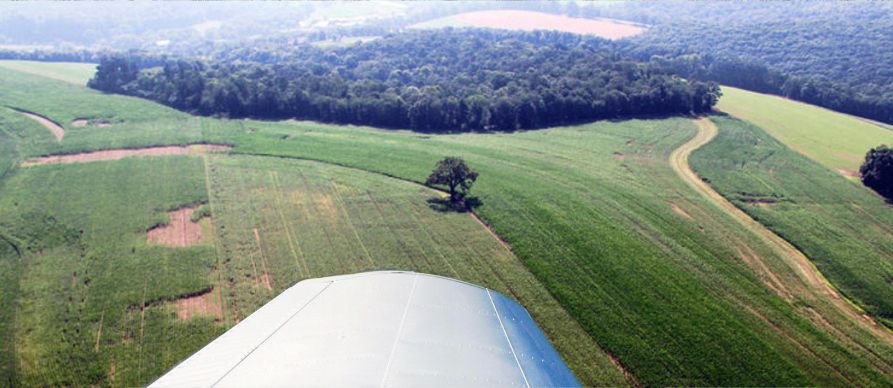
The Turns around a point maneuvers consists of flying a 360° constant radius turn at a specific altitude around a single ground based reference point.
The principles are the same in any turning ground reference maneuver
- Higher ground speeds require steeper banks
- Slower ground speeds require shallower banks.
The objectives of turns around a point are :
- Maintaining a specific relationship between the airplane and the ground.
- Dividing attention between the flightpath, ground-based references, manipulating of the flight controls, and scanning for outside hazards and instrument indications.
- Adjusting the bank angle during turns to correct for groundspeed changes in order to maintain a constant radius turn; steeper bank angles for higher ground speeds, shallow bank angles for slower ground speeds.
- Improving competency in managing the quickly changing bank angles.
- Establishing and adjusting the wind correction angle in order to maintain the track over the ground.
- Developing the ability to compensate for drift in quickly changing orientations.
- Developing further awareness that the radius of a turn is correlated to the bank angle.
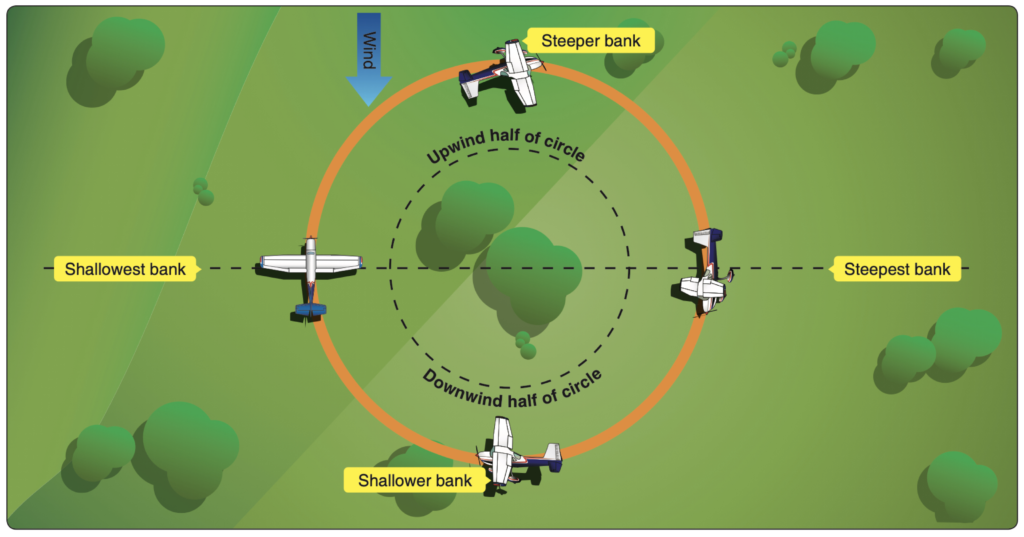
Flying the maneuver
To perform a turn around a point, the pilot must complete at least one 360° turn; however, to properly assess wind direction, velocity, bank required, and other factors related to turns in wind, the pilot should complete two or more turns.
As in other ground reference maneuvers, when wind is present, the pilot must a constantly adjust the airplane’s bank and wind correction angle to maintain a constant radius turn around a point.
In contrast to other ground reference maneuvers in which turns were approximately limited to either 90° or 180°, turns around a point are consecutive 360° turns where, throughout the maneuver, the pilot must constantly adjust the bank angle and the resulting rate of turn in proportion to the groundspeed as the airplane sequences through the various wind directions.
The pilot should make these adjustments by applying coordinated aileron and rudder pressure throughout the turn.
When performing a turn around a point, the pilot should select a prominent, ground-based reference that is easily distinguishable yet small enough to present a precise reference.
In addition you must assess the wind direction in order to enter the maneuver on the downwind and correctly. Sources of wind information include:
- METARS
- ATIS / ASOS
- ATC
- Obserations
- Smoke direction
- Water
- Flags
Pre-maneuver actions and checklist
Prior to entering the maneuver you must complete the CHAMPS checklist.
- Clearing Turns: 2 x 90° Turns (may be used to line up for the maneuver)
- Heading: Enter downwind
- Altitude: 600′ – 1000′ AGL NEVER BELOW 600’ (Use 1,500′ AGL for ECAC maneuvers)
- Mixture Rich:
- Place to Land / Fuel Pump on
- Switches and Seat Belts
Performing the maneuver
- The pilot should enter the maneuver downwind at a distance of ¼ to ½. mile from the point. The entry to the maneuver begins abeam the point where the groundspeed is at its fastest. The appropriate radius of turn and distance from the selected ground-based reference point will dictate the bank angle.
Upon entering the maneuver, depending on the wind’s speed, it may be necessary to roll into the initial bank at a rapid rate so that the steepest bank is set quickly to prevent the airplane from drifting outside of the desired turn radius. This is best accomplished by repeated practice and assessing the required roll in rate.
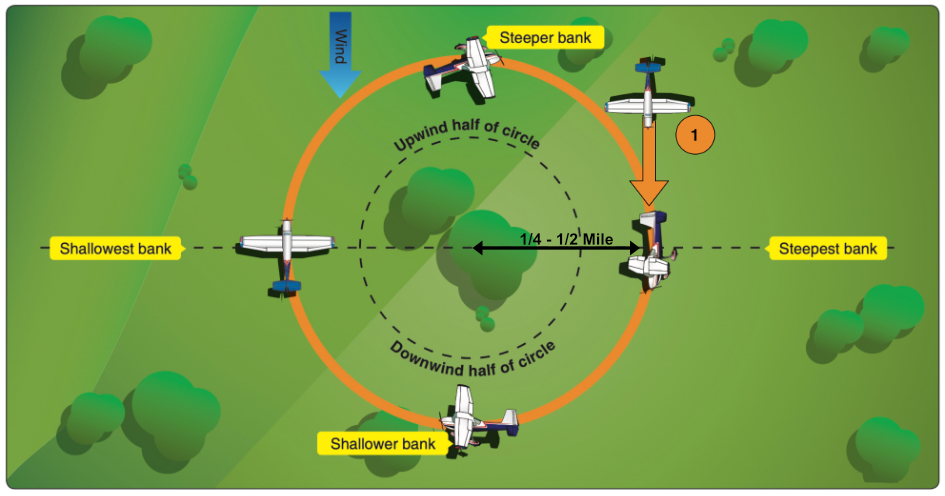
- At the crosswind point you will need less bank (medium bank) and introduce a wind correction angle to prevent the wind blowing you away from the point – in order to maintain the constant radius around the point.
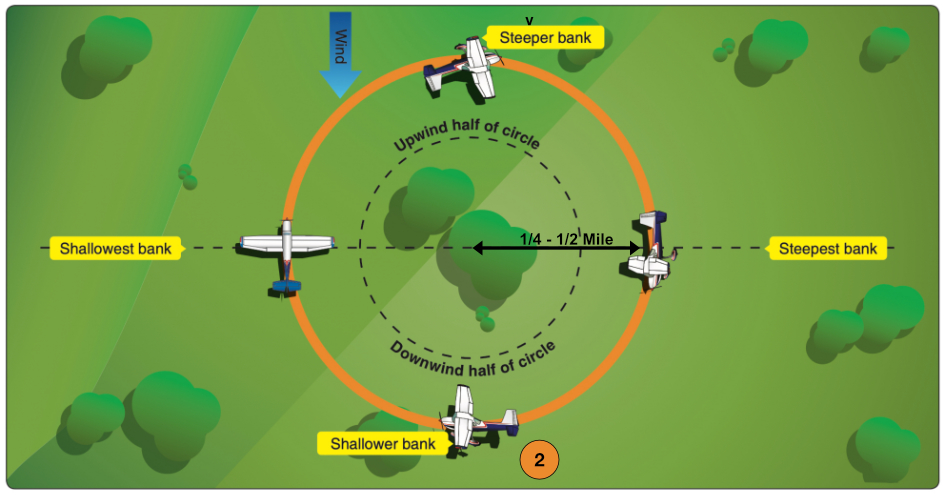
- Thereafter, the pilot should gradually decrease the angle of bank until the airplane is headed directly upwind.
The upwind has the slowest ground speed of the maneuver.
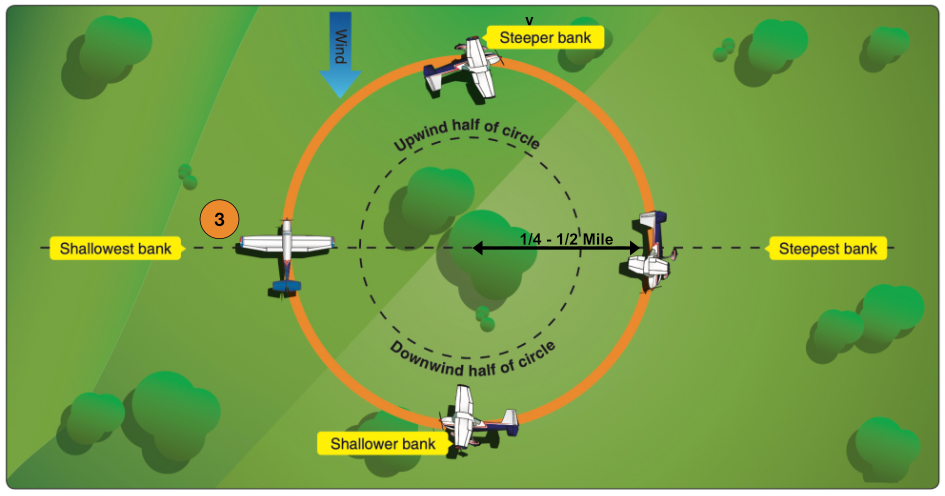
- As the upwind becomes a crosswind and then a downwind, the pilot should gradually steepen the bank to the steepest angle upon reaching the initial point of entry.
You may need to introduce a wind correction angle to prevent the wind blowing you towards the point – in order to maintain the constant radius around the point.
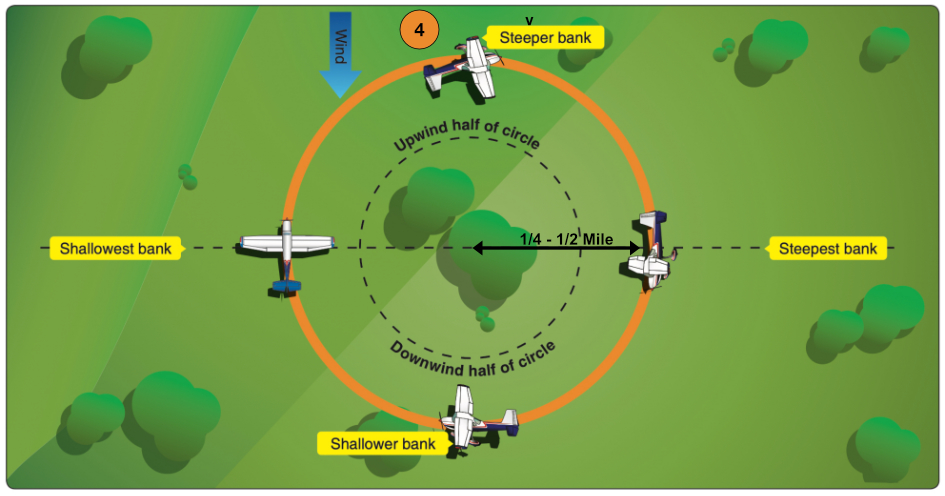
- During the downwind half of the turn, the pilot should progressively adjust the airplane’s heading toward the inside of the turn. During the upwind half, the pilot should progressively adjust the airplane’s heading toward the outside of the turn.
The maneuver should be exited on the downwind.
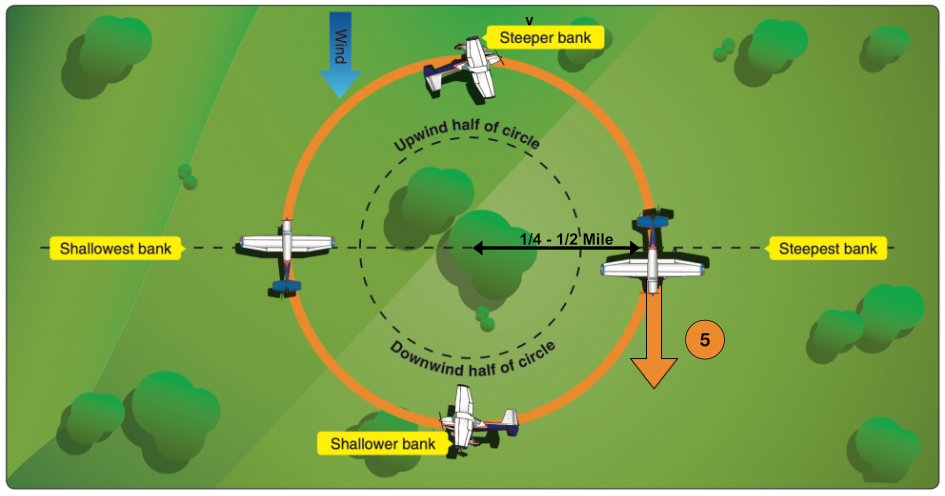
Remember that the goal is to make a constant radius turn over the ground and, because the airplane is flying through a moving air mass, the pilot must constantly adjust the bank angle to achieve this goal.
ACS Standards
- Clear the area
- Select a suitable ground reference area, line, or point as appropriate
- Turns around a point: enter at an appropriate distance from the reference point, 600 to 1,000 feet AGL at an appropriate distance from the selected reference area
- Apply adequate wind-drift correction during straight and turning flight to maintain a constant ground track around a rectangular reference area, or to maintain a constant radius turn on each side of a selected reference line or point
- If performing turns around a point, complete turns in either direction, as specified by the evaluator
- Divide attention between airplane control, traffic avoidance and the ground track while maintaining coordinated flight.
- Maintain altitude ±100 feet; maintain airspeed ±10 knots.